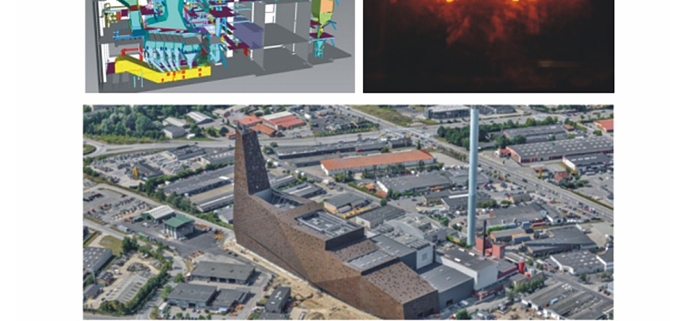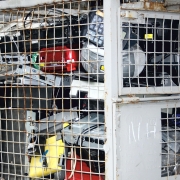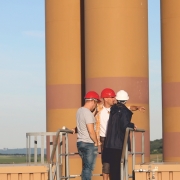The Market for Energy from Waste Remains Dynamic
Even last year the number of garbage incinerators has been further increased. Since the beginning of 2015 more than 200 new facilities with a treatment capacity of more than 50 million tons per year have gone into operation.
Around 70 percent of those capacities accounted for new building projects in China. Another ten percent accounted for projects in the remaining Asiatic region. Mainly within the context of new building projects in the United Kingdom and modernization as well as expansion projects in the rest of Europe only around 20 percent of those capacities have been installed in Europe.
The majority banks on grate-firing
At the end of 2017, almost 2,450 garbage incinerators with a yearly treatment capacity of more than 330 million tons were in operation. The majority of those facilities banks on grate-firing; only around 20 percent of the global stock of facilities is working with fluidized-bed combustion. Alternative treatments are still playing a minor part. According to the ecoprog GmbH, the yearly enlargement shall remain dynamic: Until 2026 it is expected that around 60 facilities with an incineration capacity of around 17 million tons per year are going to be built.
Asia remains dominant
Simultaneously, the unequal regional distribution is further enhanced: Since 2010 the expansion of buildings has been stabilized at a high level. In 2015 and 2016 around 12 million tons per year of treatment capacity was built each, and the expansion of buildings should settle down at around 10 million tons per year of treatment capacity in the years ahead. Since 2012 the yearly increase of thermal treatment capacities reached around two million tons per year in Europe. The expansion has almost been halved compared with the boom year between 2008 and 2010. For years the amount of incineration plants decreases due to low energy prices in North America; a few new building projects have to face the shutdown of old facilities.
Probably Asia will dominate the Waste-to-Energy-Market in the years to come as well. An end of the Chinese construction boom is not yet expected since the targets of the past five-year-plan have not been accomplished so far. For the time until 2020, the goals of the current five-year-plan have already been increased. Simultaneously, a diversification of the Asian market took place: In recent month plans for waste burning facilities have been specified in aspiring states such as India, Thailand, Indonesia or the Philippines. Presumably, new capacities are going to be built in Japan and Taiwan as a replacement for old facilities. In Japan, this development is accompanied by a trend away from numerous small plants to a reduced number of big facilities.
Market recovery in Europe and South America
There are signs for a market recovery in Europe as well. The British waste market still implements numerous of the planned projects, but the project planning increased in South and East Europe as well. In France projects for the incineration of substitute fuels increase. Poland prepares more WtE-projects for the assistance by the EU. However, in the existing markets, such as Germany and Switzerland, high acceptance prices and high utilization rates of the facilities ensure increasing numbers of modernization. A major project in Mexico has animated the South American waste market. Just like in Asia there are numerous metropolitan areas with an increasing number of amounts of waste and scarcity of space as well as the wish for stronger self-sufficiency in the energy sector. In Europe, the European waste policy is still the most important market factor for the establishment of WtE-capacities. Altogether, the ecoprog GmbH estimated an expansion of over 600 new incineration plants with a capacity of more than 170 million tons per year in the next 10 years.
Acquired by Chinese Companies
The competition’s globalization stagnates briefly within the WtE-sector in the past year. The restriction regarding the acquisition of companies abroad, determined by the Chinese Government at the beginning of 2017, is one of the main reasons for the stagnation. Due to the fear of too high capital outflows from the country this decision has been made. Previously, especially facility operators had been acquired by Chinese companies, such as EEW in Germany, Novago in Poland and Urbaser in Spain.
The study, “Waste to Energy”, from which the data has been extracted, is updated every year and is considered as the most extensive market inquiry and data collection regarding the topic of waste processing worldwide. More information concerning the current 10th edition 2017/2018 can be downloaded under www.ecoprog.de/publications/energy-management/waste-to-energy.htm.
Source: ecoprog GmbH
GR 3/2018









